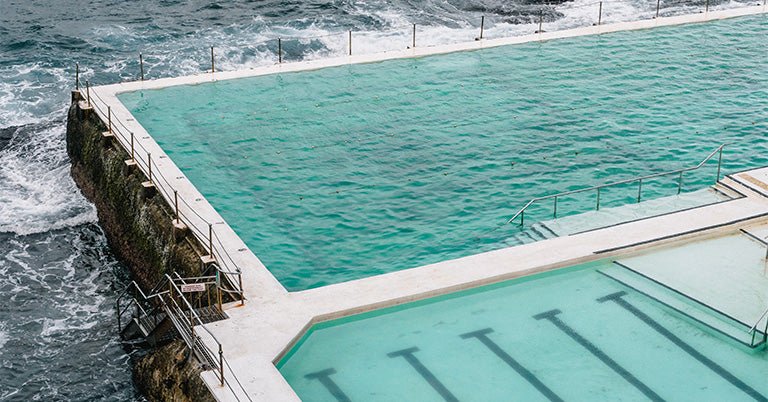Have you ever noticed someone pool running and snickered to yourself because they looked so silly? Did you wonder why on earth they'd want to run in a pool or whether water running is even a worthwhile workout? The fact is, pool running is excellent exercise. For an injured runner who otherwise has to stay off their feet, water running is one of the best ways to maintain run-specific fitness. But injured or not, any runner can benefit from some time in a lake, ocean, or pool.
The Benefits of Water Running and How to Do It Right
Here's why water running is beneficial, and tips to help you do it right.
Benefits of Pool Running
There are plenty of compelling reasons to try water running.
There's zero impact. Water running eliminates any impact, meaning your legs will be less fatigued and your muscles and joints will be spared the wear and tear of running on land.
It aids recovery. Many athletes use water running as a means to get back to running sooner than usual after a race. Others implement one day a week of running in the pool into their schedules, in order to avoid injury during heavy training loads.
It's a run-specific substitute. Pool running works the same muscles as land running, with added resistance from the water. So if you're injured and unable to do weight-bearing exercise, water running is your best option to stay fit and prepare for an eventual return to land.
It helps fine-tune your form. Water running is a great way to focus on your running form. Pay attention to lifting your knees high, increasing your cadence, and improving your elbow drive. You may find that you actually run better once you're back on land.
It builds core strength. Your abs get a workout while water running because they help keep your body upright. You may notice new muscle tone in your arms as well, thanks to the resistance of those underwater elbow drives.
How to Water Run
Ready to try running in a pool or lake, or while at the beach? Here's how to get the most out of your water workout.
Use a belt. Strap a buoyancy belt around your waist when you water run especially when you first start. Over time you may develop the core strength to run without a belt, but it's quite difficult to do so. Instead, stick with a belt to help you maintain perfect form.
Head for the deep end. You'll want to run in water deep enough that your feet do not touch the bottom. Remember, one of the main reasons to water run is to avoid the impact associated with traditional running.
Run like on land. As you water run, mimic your regular running form and movements as much as possible. Lift your knees high and make sure your feet strike, roll, and push off as though they're making contact with land. Keep your shoulders down and back and drive your elbows with every stride.
Run by time and feel. You won't be able to replicate your land mileage or pace in the pool, so instead run by time and use perceived exertion as your guide. Keep your cadence high to maintain a strong effort, and aim for the same intensity as you would for distance, tempo, interval, and race-pace runs on land.
Stay hydrated. Even though you're immersed in water, you still need to take water in. Just like with any exercise, staying hydrated with water or electrolyte replacement drink is key. When you run hard in the water, you'll notice yourself sweat. Keep a BlenderBottle shaker or the giant Koda jug on deck to stay on top of your fluid intake.
Water Running Workouts
An interval run is often the best water-running workout for two reasons you'll be forced to push yourself and the time will fly by. Here are two high-intensity sessions to help you get started.
Workout #1 duration 45 minutes
- 10 minutes easy-running warm up
- 15 x (1 minute sprint, 1 minute easy-running recovery)
- 5 minutes easy-running cool down
Workout #2 duration 60 minutes
(Note: “race pace” refers to the equivalent perceived exertion)
- 10 minutes easy-running warm up
- 8 minutes @ half marathon race pace
- 2 minutes easy-running recovery
- 6 minutes @ 10k race pace
- 2 minutes easy-running recovery
- 4 minutes @ 5k race pace
- 2 minutes easy-running recovery
- 6 minutes @ 10k race pace
- 2 minutes easy-running recovery
- 8 minutes @ half marathon race pace
- 10 minutes easy-running cool down
We'd love to hear what you think of water running, once you give it a try. Head to the pool, the lake, or the ocean and then report back!





Leave a comment
All comments are moderated before being published.
This site is protected by reCAPTCHA and the Google Privacy Policy and Terms of Service apply.